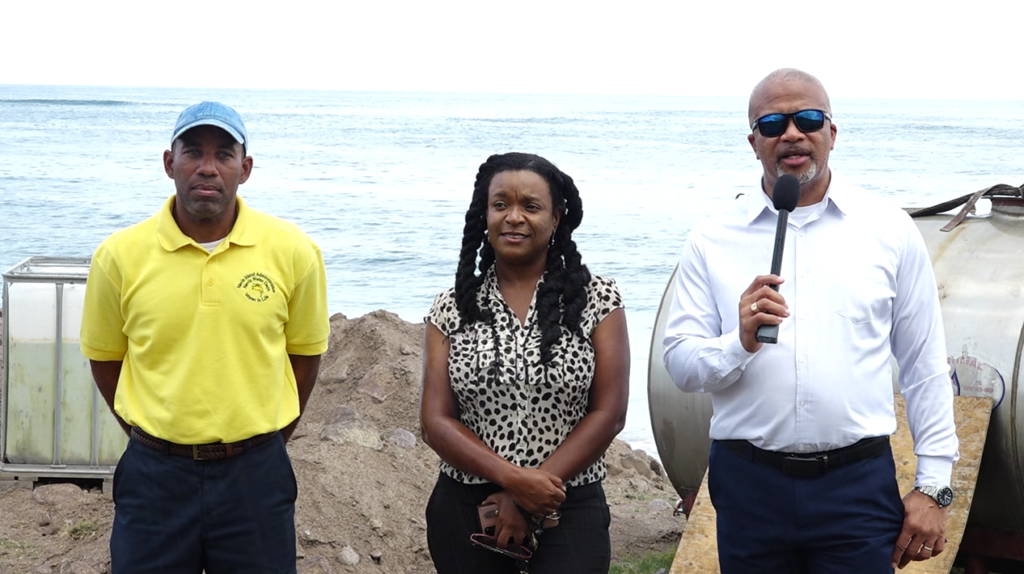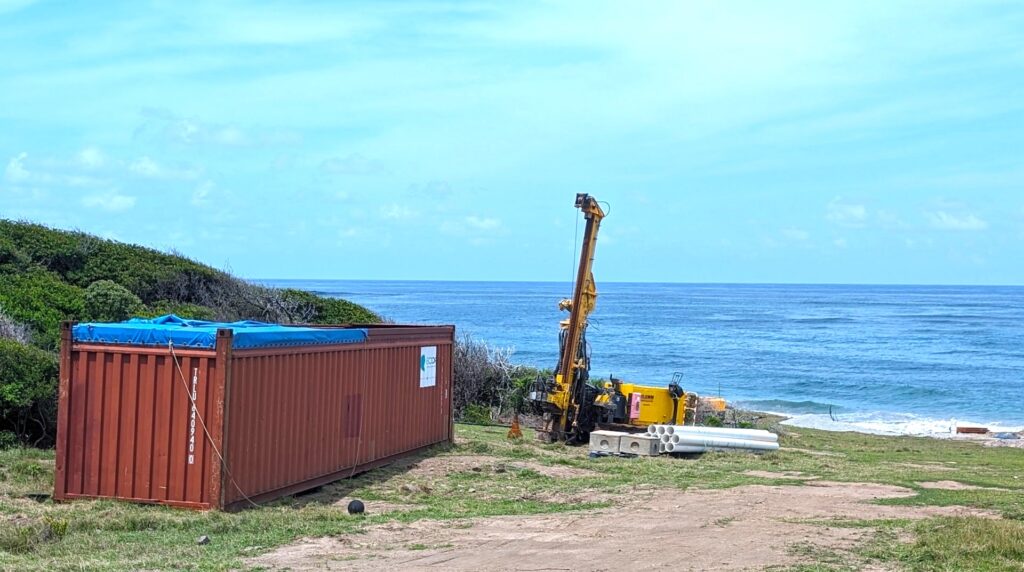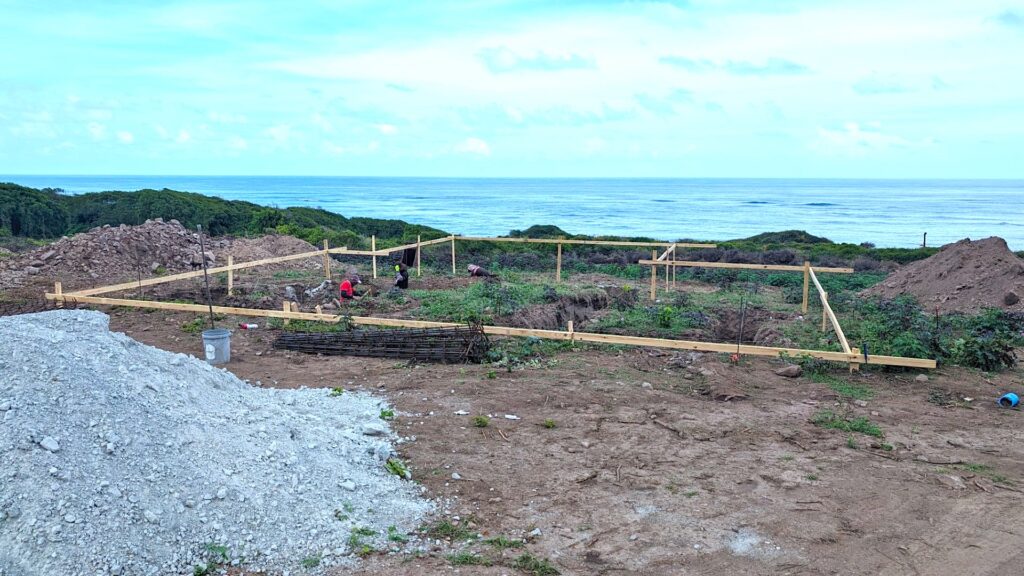NIA CHARLESTOWN NEVIS (April 24, 2024)- Construction on the photovoltaic desalination plant in Butlers, St. James is moving apace as the Nevis Island Administration (NIA) continues its efforts to enhance the supply of water available to consumers on the island.
Minister with responsibility for Water Services the Honourable Spencer Brand paid a visit to the site on April 18, 2024. He was accompanied by Mr. Roger Hanley, Operations Manager at Nevis Water Department, and Ms. Renee Walters, Energy Commissioner in the Premier’s Ministry.

Minister Brand explained that the solar-powered desalination plant is part of a Federal pilot project funded through the United Arab Emirates (UAE)Caribbean Renewable Energy Fund (CREF). He said the project will positively impact not only the St. James’ area but also the wider Nevisian population.

“This project is very critical to the island of Nevis. We all recognize the various challenges that we are facing with our regular supply of water from our deep wells. I am hoping that within a few short months we’ll be able to have this new source of water brought into the system,” he said.
The Honourable Brand further informed that the plant will be solar-powered in order to make it a feasible undertaking in light of the high cost of electricity. He said once it comes on stream it will serve as a test for the government to determine the possibility of future expansion of the project.
“We all would recognize the cost of energy to produce desalinated water is so high, however with the thrust that we are making towards developing geothermal energy we believe that in the future we will have more and much larger desalination plants here on the island of Nevis that will be able to augment our supply of ground water.”
Mr. Hanley gave an overview of the desalination process, explaining that water from the ocean will be accessed through drilling of a coastal well. The brackish water from that well will be channeled through the plant where the salt and other components will be removed to produce drinkable water to World Health Organisation (WHO) standards.
“From the well the water is pumped to the reverse osmosis unit, from there it is filtered and it passes through membranes and also involves the use of demineralization for the water to be palatable, and it is then injected into the water network.
“This particular plant is designed to produce 70,000 gallons per day if we were to use energy during the night, but from the solar energy it would be approximately 30,000 gallons per day,” he informed.
Premier of Nevis the Honourable Mark Brantley thanked Minister Brand and the team that have oversight of the project, however he noted that the small-scale desalination plant would not be a panacea for the water issues being experienced on the island due to low levels of rainfall.
On average the Nevisian public uses1.6 million gallons of water per day.

“The plant in Nevis is well under construction already so that is going to be putting water into the system this year I’m told, but that desalination plant is not going to solve our problems because the quantity of water is quite small,” he said during his monthly press conference on April 23.
“Do we invest in desalination as a wider solution? I think the answer is yes but I think not yet, because before we invest in significant desalination we have to solve the cost of electricity. So for me geothermal has to come first and desalination comes after, and that’s the path that we are pursuing.”
EXOFOR will carry out the drilling process while Kelly Construction is responsible for erecting the physical plant.
END













